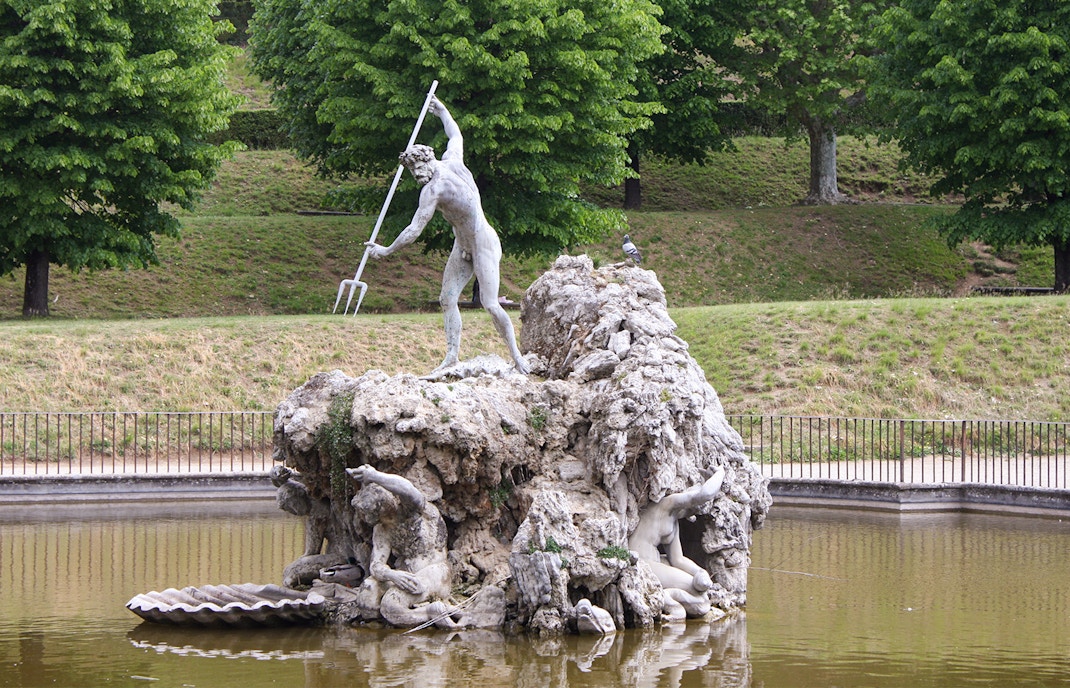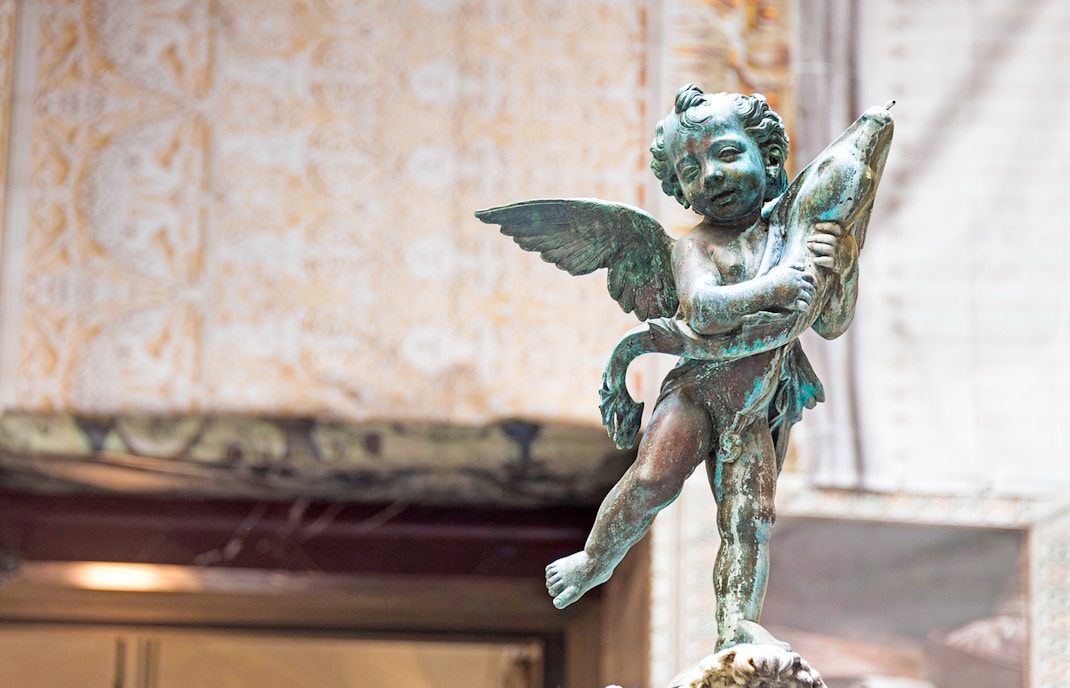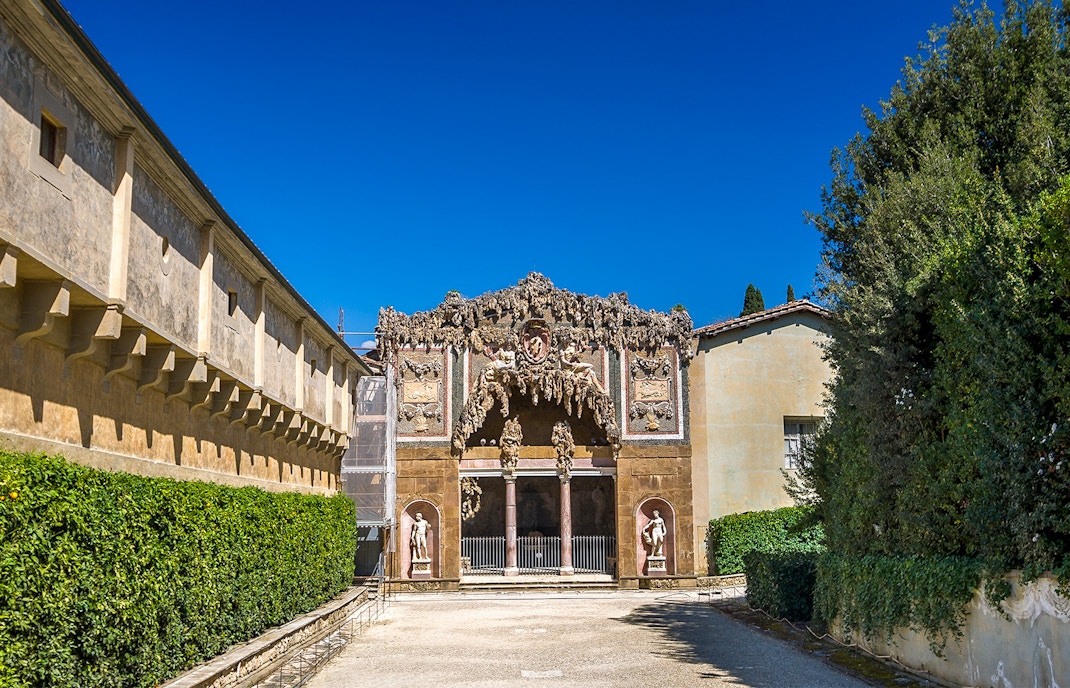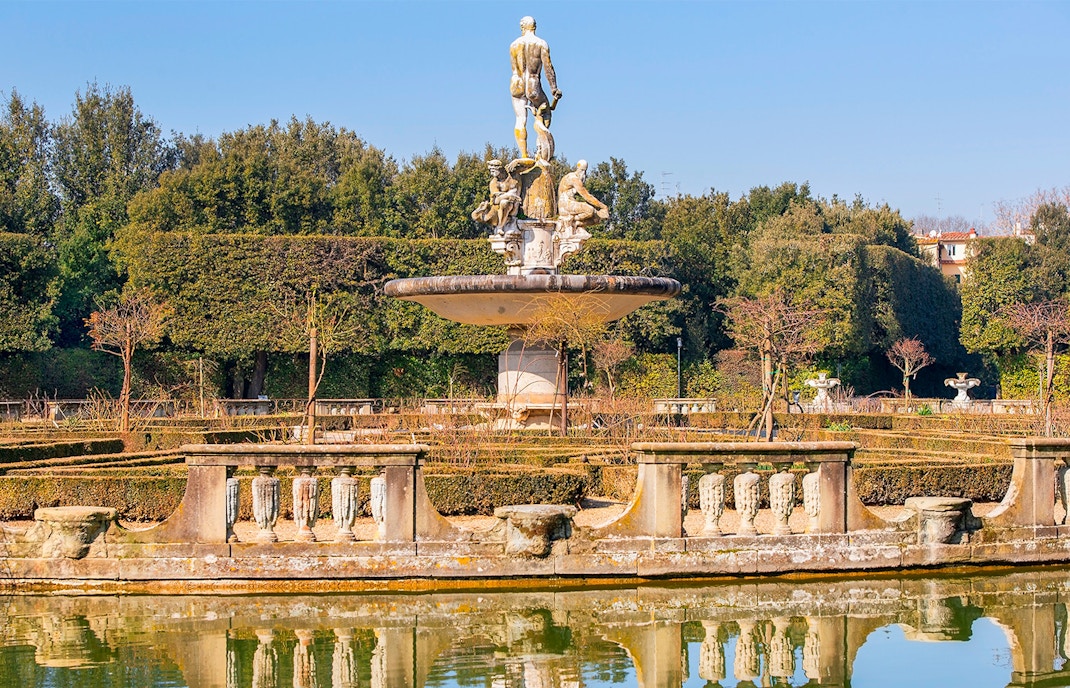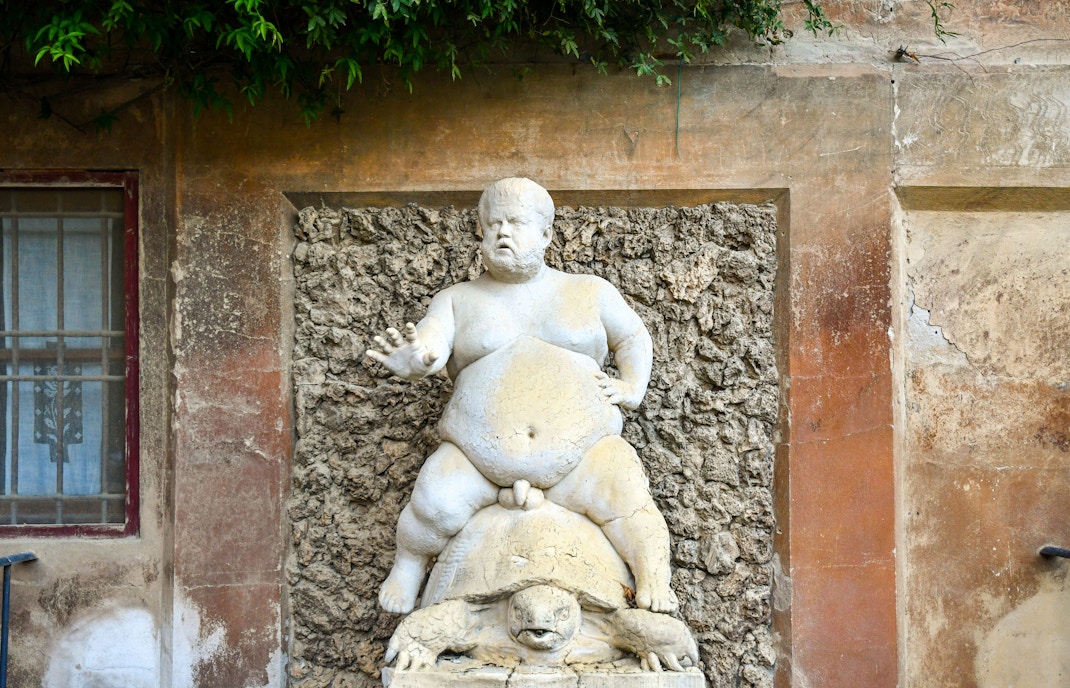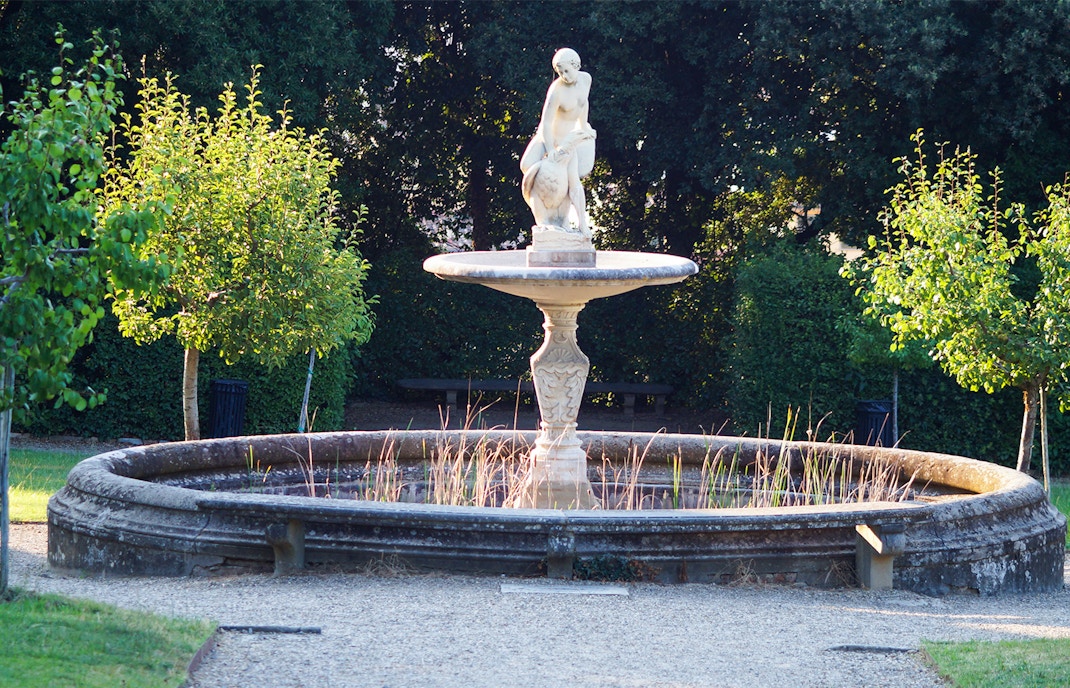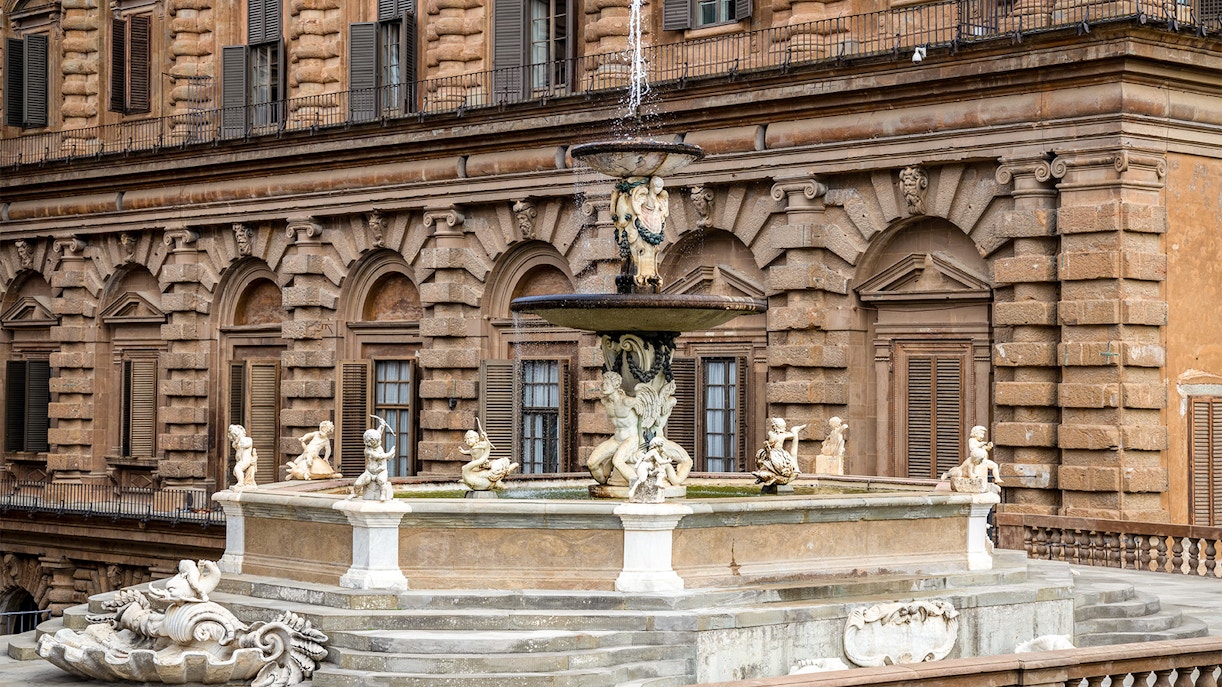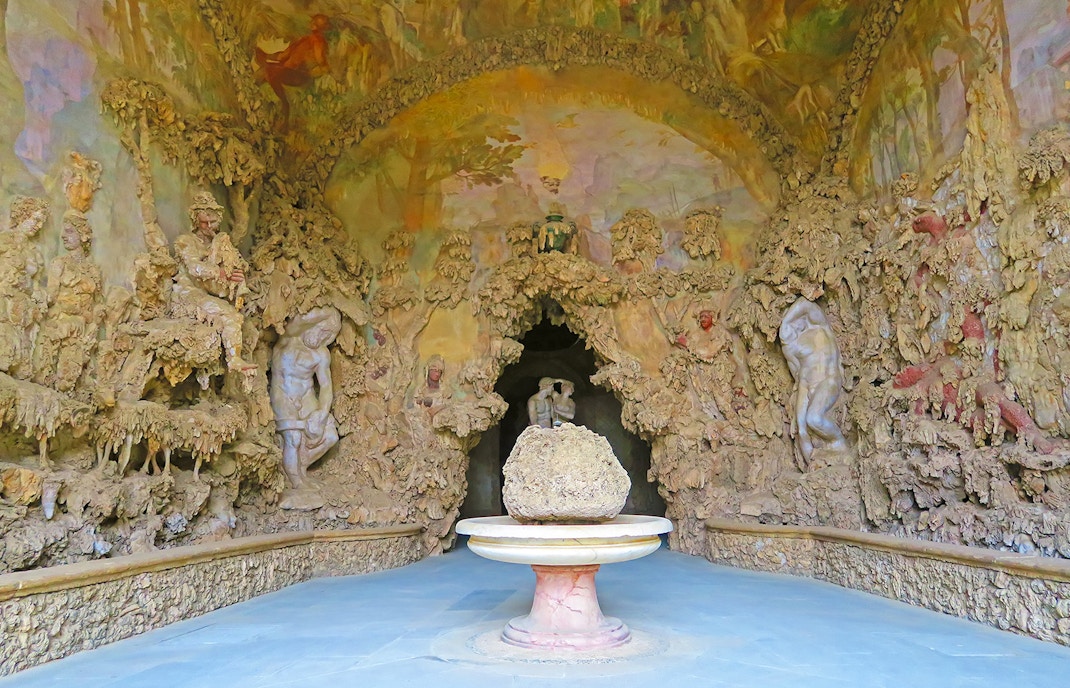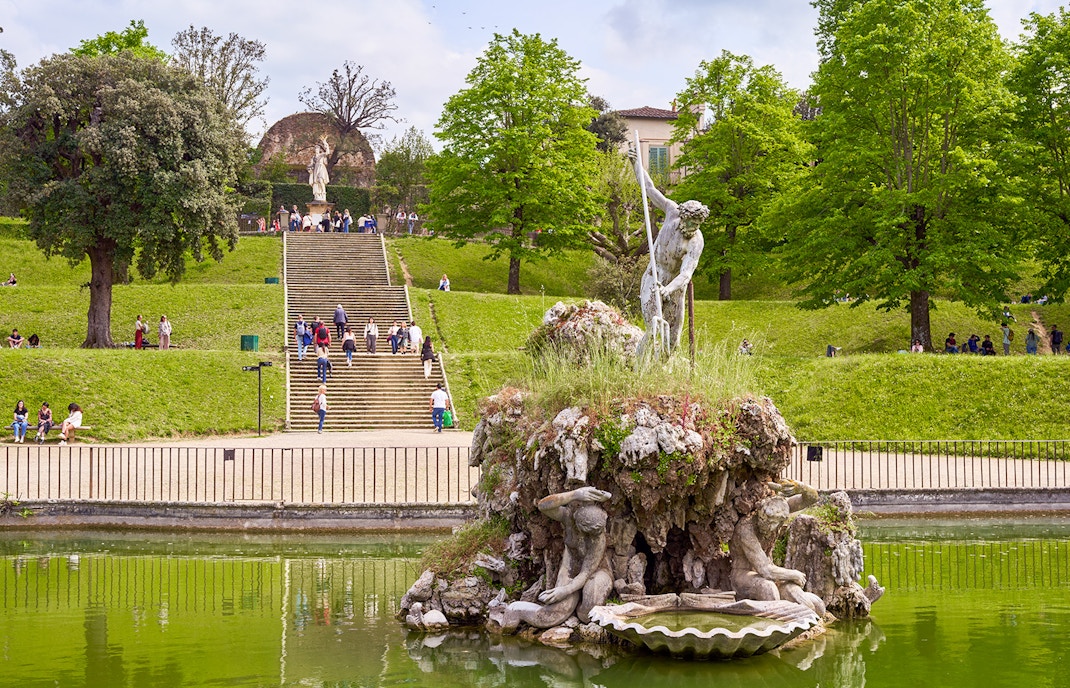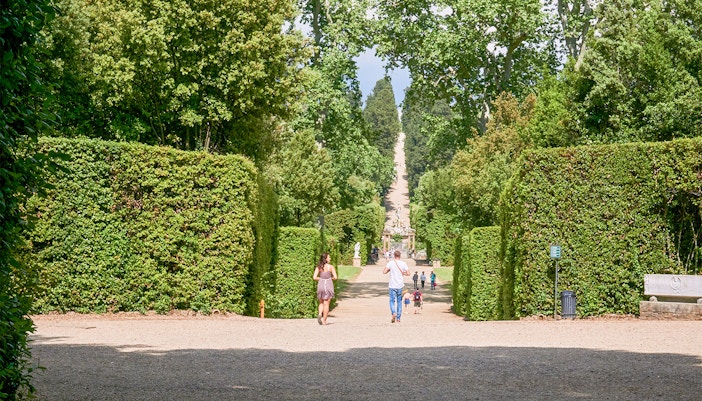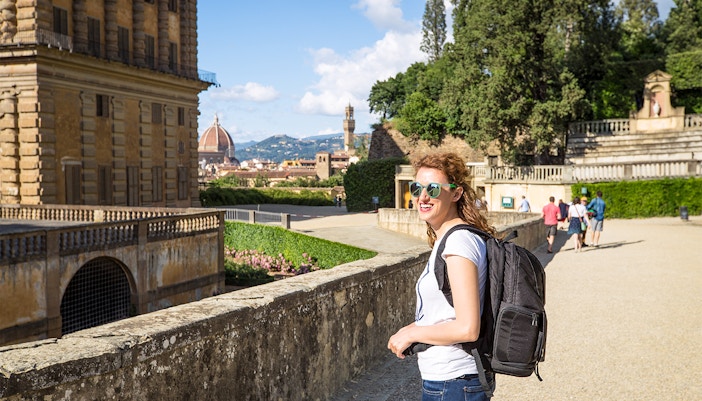Historical evolution of the fountains
The fountains of Boboli Gardens have evolved significantly since their inception, reflecting the changing tastes and artistic trends over centuries.
16th Century: Medici patronage
The creation of the Boboli Gardens began in the mid-16th century under the patronage of the Medici family. The initial fountains, like the iconic Neptune Fountain, were designed to demonstrate the power and sophistication of the Medici rule. These early installations emphasized grandiose displays of water, combining both artistic and technical innovation.
17th Century: Expansion and ornamentation
The gardens and their fountains were expanded and embellished under the Habsburg-Lorraine dynasty. New fountains, such as the Fountain of the Oceanus, were added, depicting more intricate designs and elaborate mythological themes. This period saw a shift towards more decorative and ornate features, reflecting the baroque style of the era.
18th-19th Century: Continued enhancements
During the 18th and 19th centuries, the gardens continued to evolve with the addition of smaller, more intimate fountains, like the charming Cupid Fountain. These additions often aimed to create secluded, picturesque spots within the gardens, enhancing the overall aesthetic and visitor experience.
Modern era: Preservation and restoration
In the modern era, efforts have been focused on preserving and restoring the historic fountains of Boboli Gardens. These efforts ensure that the fountains continue to enchant visitors with their historical significance and artistic beauty, while also maintaining their functional integrity.
Learn more about the garden's history

